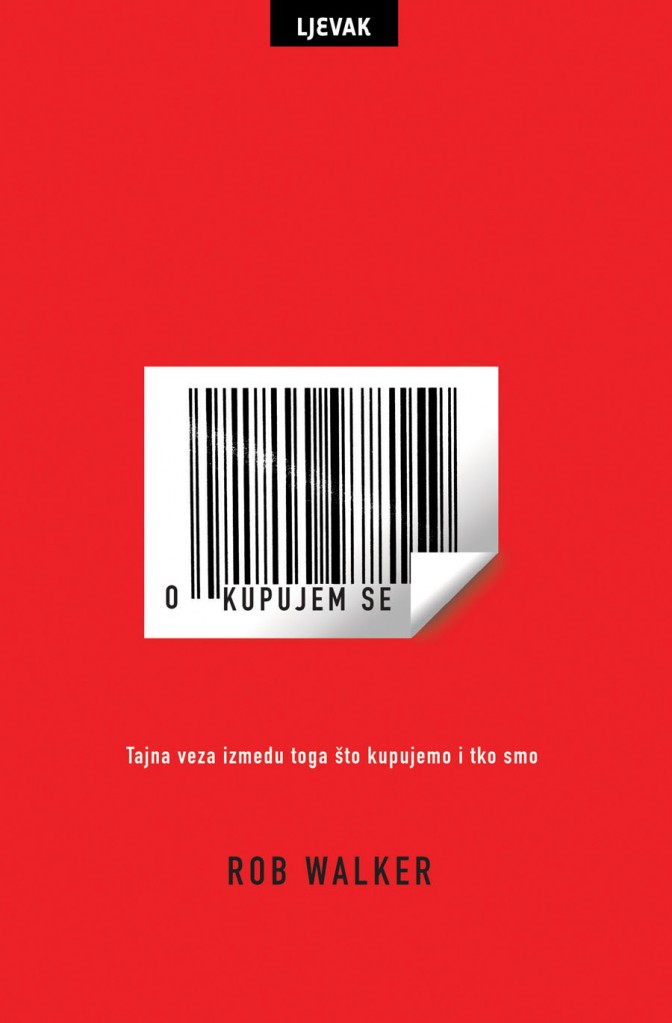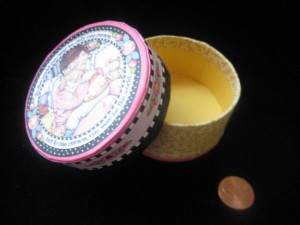I was reading an article yesterday about Chinese manufacturers targeting domestic (vs. U.S. and European) consumers, and the main example was a bicycle maker. One of its challenges, the article noted, is that “big companies like Giant Manufacturing Co. of Taiwan already have a strong presence in the high end of the domestic bicycle market.”
How awesome is it that there is actually a company called Giant Manufacturing Co.?
That’s like something on The Simpsons.
They should make T-shirts.
Posted Under:
World News
This post was written by Rob Walker on September 30, 2009
Comments Off on Dept. of Impressive Corporate Names
- A whopper of an illusion is being shattered by Burger King ads: “During a live webcast Oct. 20, NASCAR star Tony Stewart will be hooked up to a polygraph and asked: Does Tony really love Burger King’s Whopper sandwich? The webcast will be the climax of a monthlong campaign by Crispin Porter + Bogusky — “The Truth About Tony” — that seeks to demonstrate that Stewart actually, really, truly loves eating Whoppers.” LA Times muses on the celebrity endorsement. Sort of interesting.
- Giftcards galore: GraphicHug also says: “Gift card designs these days are becoming fancier and fancier and I feel like Target has single-handedly reinvented the idea of a gift card.” Another earlier Consumed topic! Some sort of harmonic moment with GraphicHug today.
- Keep Calm and Carry On: GraphicHug says “this is a current image that needs to be questioned.” Consumed readers will recall that the design was not popular when it debuted in WWII, and was never widely used.
- Key To Subliminal Messaging Is To Keep It Negative, Study Shows: “Negative words may have more of a rapid impact.”
- Illustrator Sara Antoinette Martin: Nice stuff. Coolhunting Q&A.
- … with a bullet.: “Americans usually buy about 7 billion rounds of ammunition a year, according to the National Rifle Association. In the past year, that figure has jumped to about 9 billion rounds, said NRA spokeswoman Vickie Cieplak.”
- LVMH in the recession: Doing fairly well, the Economist says. Possibly because more of its customers are actually rich, not pretending to be. “Much of the [lux] industry’s rapid growth in the past decade came from middle-class people, often buying on credit or on the back of rising house prices. According to Luca Solca of Bernstein Research, 60% of the luxury market is now based on demand from “aspirational” customers rather than from the wealthy elite.”
- Are You A New Yorker Who Is Choosing To Buy Less?: Consider taking this survey for Kirsten Firminger, a graduate student in the Social Psychology program at the Graduate Center of the City University of New York. Click for details. “The purpose of my research is to get a better understanding of how people learn to buy less and what barriers and supports people have encountered while trying to voluntarily buying less.”
- Prada Hits Milan Fashion Week Mixing Rich and Poor – WSJ.com: “I wanted to describe the current world,” Ms. Prada said while chatting backstage, wearing her traditional ironic motherly look—a dusty pink pencil skirt under a navy blue sweater and sequined knit tights. “There are the rich and the poor.…There is nostalgia.” Why do people take Ms. Prada seriously? Are these supposed to be the “ideas” that animate high fashion? Because it sort of sounds like a sixth-grade book report to me.
- Jay-Z: A Master Of Occult Wisdom? : NPR: Surprisingly interesting.
- Consumerism: By-product of international finance?: “It may be that international capital flows have driven our consumerist microbehaviors much more than we know; that it wasn’t just personal ignorance, irresponsibility, cupidity, greed and covetousness that drove the housing bubble and the boom in consumer debt; but instead those moral motives came after the fact, after our fate was sealed by the wash of investment coming in from overseas. We didn’t want consumerism, but someone had to sop up all those Chinese exports.”
These links compiled via delicious, and repurposed here with plug-in Postalicious. Not enough stuff? Not the stuff you wanted? Try visiting unconsumption.tumblr.com, murketing.tumblr.com, and/or the Consumed Facebook page.
Posted Under:
Non-Daily Linkpile
This post was written by Rob Walker on September 29, 2009
Comments Off on Linkpile
 TRASH TALK
TRASH TALK
Attracting consumers by educating them on the value of their junk
“A lot of what I do is rebrand garbage,” Tiffany Threadgould says. “It doesn’t have to have a nasty stigma to it.” Maybe it doesn’t have to, but it’s not exactly shocking that it does. Still, what Threadgould means is that she wants more of us to think about things before we throw them away — or rather what we might do with them instead.
Read the column in the September 27, 2009, New York Times Magazine, or here.
Discuss, make fun of, or praise this column to the skies at the Consumed Facebook page.
Posted Under:
Consumed,
Unconsumption
This post was written by Rob Walker on September 26, 2009
Comments Off on In The New York Times Magazine: RePlayGround
Posted Under:
Non-Daily Linkpile
This post was written by Rob Walker on September 24, 2009
Comments Off on Linkpile
Here’s the book to look for:

Posted Under:
Buying In (the book)
This post was written by Rob Walker on September 23, 2009
Comments Off on Attn: Murketing readers in Croatia:

[The Product Is You* is an occasional Murketing series collecting advertising that is aimed at advertisers: Magazines or television networks packaging up their consumers — that is, you, the potential ad target — in ways designed to attract advertisers. ]
In today’s installment, Rob, 37, stands in as the consumer that advertisers want. Look at him. He’s a loving father of course. And he has a pretty nice house. Probably a good amount of disposable income, too. You can get a hint of how he’s disposed of it by admiring his sunny kitchen.
“His job keeps him busy.” Rob, 37, has work. The income is coming in. Where will he dispose of it next?
I don’t know if it’s Rob’s day off and he feels compelled to keep up with work even during his quality time with the kiddo, or perhaps he just works at home. Either way, Rob, 37, is one of “those who matter.” You want him to “spend quality time with your brand.”
Most Product Is You advertising comes from specific media venues, such as a cable network. But Rob, 37, is one of those elusive consumers whose media habits aren’t so easily pinned down. This ad explains how the advertised company can help brand-owners “target your audience at scale across multiple channels.”
This service allows you to “place your message carefully,” so that you’ll reach him even if he is, oh, let’s say, spending time with his daughter, while surfing the Web, or whatever. This looks looks like a happy moment. Maybe your brand should be part of it. “Our platform puts your brand where consumers live online,” this ad tells marketers. “So you and your audience can enjoy a whole lot of togetherness.”
That’s what this service is for. It’s there so that Rob, 37, can spend quality time with his daughter, and your brand. A whole lot of it.

Posted Under:
The Product Is You
This post was written by Rob Walker on September 21, 2009
Comments Off on The Product Is You, No. 14
- Mass hysteria, crazes and panics.
- Poppytalk: Affordable Art {afternoon edition}: Working Woman: “This afternoon’s affordable art pick goes out to Working Woman and her ‘Kitchen Art’ series.” Nice.
- Vintage Roadside Visits: Cowboys and Rayguns: “Earlier this summer we were introduced to the artwork of Brian Burton. We thought it would be fun to ask Brian a few questions about his creations offered on his website Cowboys and Rayguns.” Neat stuff.
- The Dark Side of Cooperation: “Pro-cooperation instincts rely on dangerous conformity.” Interesting point, although backed by bizarre example suggesting that in a disaster, food and water and other resources should be distributed on the basis of ability to pay. (The wording used is “the basis of who values them most,” but obviously everyone would value food and water close to equally in a disaster, but some would have more resources to expend obtaining it.) Still, as I say, the overall point is sort of interesting and worth a read.
- Who Blogs?: Some data. Dunno how reliable.
- Goodwill shops see recession boost in sales: Story says: “The Goodwill image is changing. With a fresher look, an emphasis on customer enjoyment and brand-new clothes on hand from dozens of corporate donors, the stores are becoming shopping destinations.” Consumed on Goodwill from last year is here.
- Retailers try to get personal with shoppers: “Stores are also presenting more information about products — how they are made and why they cost what they do.” Yeah, right. Will it actually break down the profit margin? I suspect the “information” will in fact be an artful pitch. Fine Corinthian Leather, that sort of thing. (For different views see comments on the Consumed Facebook page about this article.)
- History of the Super Soaker: Thx P.F.
- Ocean ‘Deserts’ Becoming More Lifeless: “These vast stretches of barren sea could affect the marine food chain, and ultimately impact global fish stocks.”
These links compiled via delicious, and repurposed here with plug-in Postalicious. Not enough stuff? Not the stuff you wanted? Try visiting unconsumption.tumblr.com, murketing.tumblr.com, and/or the Consumed Facebook page.
Posted Under:
Non-Daily Linkpile
This post was written by Rob Walker on September 21, 2009
Comments Off on Linkpile

Early on in Significant Objects, someone commenting on a BoingBoing post about the project opined:
I hate to tell you this, but you’ve basically just reinvented advertising. Good advertising takes a product and imbues it with some kind of story. The only differences are that 1) generally speaking the product is new instead of used, 2) the story is usually less specific to any individual and more generally applicable to the mass-produced nature of the product and 3) the artifice in the story is more or less deliberately concealed.
Another comment-er, noting those rather extensive and far-reaching “only differences,” replied: “Oh, is that all? LOL. Anyway, perhaps both advertising and the Significant Objects project are stories, because everything is a story.”
It’s a fair point that the difference between the way we bring Significant Objects readers “in on” what we’re doing is distinct from artifice that is “deliberately concealed.” On the other hand, a Chicago Tribune article about the project explored the parallels between Significant Objects and advertising in a more thoughtful way, citing examples that fall on a continuum of disclosure and artifice, from McDonaldland characters to the J. Peterman catalog to high end grocers putting out “little cards at the foot of produce that explain how the farmer who harvested this broccolini owns seven chickens and drives his daughter to school in a biodiesel-fueled pickup truck every morning.” (The Tribune piece is here.)
In the past I’ve defined branding as the process of attaching an idea to a product. There’s not too much logic-torture involved to say that this puts me in the camp that does see some connection between storytelling and advertising. Although I guess I would say that in addition to the advertising’s shortcomings on the honesty front, branders tend to tell nonlinear, abstract stories, as opposed to straight narratives. Especially in recent years.
Long ago, advertising might mean a page of a magazine with a big hunk of text (that often read quite a bit like a short story). Nowadays a brand like Axe, or Burger King, tells its “story” in what Henry Jenkins calls a “transmedia” manner: Across multiple platforms, in ways that might sense however you encounter them, but that are simultaneously cumulative. In fact I think marketers are way ahead of the entertainment industry (Jenkins’ focus) in transmedia storytelling, even if the branding version of it basically shrugs off linearity. The Dove Campaign For Real Beauty, for instance, posits a line of facial creams and whatnot as embodying a set of ideas about the nature of beauty itself, expressed via billboards and commercials, but also via text-message voting schemes, media appearances by its participating models, at least one stage play, and other murketing tactics. The “story” has no beginning, and no end. (It will probably stop at some point, but there will be no finale.) But there’s always a story of some kind — and in fact I’ll but the story always fits the Totem, Talisman, Evidence, and/or Fossil categories that my Significant Objects partner Joshua Glenn has defined.
The way our writers have approached stories has certainly varied. Daily Show writer Tim Carvell’s Round Box story is very much a narrative (albeit one with surprises). Bee Season/Wicket’s Remedy author Myla Goldberg’s approach to giving Significance to a Hand Held Bubble Blower is not. Nor is David Shield’s remarkable Military Figure piece. And those are just recent examples.
It would actually be rather exciting to tell the “story” of one of our Significant Objects in a truly transmedia manner. Our writers don’t have quite the budget that Unilever provides its various agencies to tell the story of Dove stuff. One of our contributors, Colson Whitehead, did surprise us by extending the story of his object into his Twitter stream; his Tweets not only amplified what he’d written, but broke the “fourth wall” (as they used to say mass-com classes, and for all I know still do) with Tweets purportedly about the motives of bidders.
It was great storytelling, and at least a little bit transmedia. And, yes, it was almost certainly an effective strategy in boosting the auction for Whitehead’s Significant Object. The wooden mallet that he wrote about, which was bought for 33 cents at a yard sale, sold for $71.

On his blog, Dan Ariely cites recent research that he says has some implications regarding “green” consumption and the idea that one “green” purchase may give us “license” to feel we’ve done our part, we’re off the hook, and we can ignore such considerations in our next action (consumer action or other):
Through a series of experiments, Mazar and Zhong drew the following distinction between two kinds of exposure to green: When it’s a matter of pure priming (i.e., we are reminded of eco products through words or images), our norms of social responsibility get activated and we become more likely to act ethically afterwards. But if we take the next step and actually purchase the green product (thereby aligning our actions with our moral self-image), we give ourselves the go-ahead to then slack off a little and engage in subsequent dishonest behavior.
So in effect, a green purchase licenses us to say “I’ve done my good deed for the day, and now I can focus on my own self-interest.” I gave at the office, I paid my dues, I did my share — that sort of thing. How moral we choose to be at any given moment depends not only on our stable character traits but also on our recent behavioral history.
Forgive me for saying so, but there’s a similar point, based on different (but not that dissimilar) research, in Buying In. I riffed on a paper called “Licensing Effect in Consumer Choice,” by Uzma Khan and Ravi Dhar, Journal of Marketing Research, May 2006. Here, cut and pasted, are three relevant paragraphs from Buying In:
Members of one group were presented with a straightforward consumer choice: Would they prefer to buy a vacuum cleaner (a utilitarian object) or a pair of jeans (a bit of a luxury), each of which was assigned the same price, $50? About 73 percent chose the more practical product, the vacuum cleaner. Members of the other group, meanwhile, were told to imagine they had volunteered to spend three hours a week performing community service; they could choose teaching children in a homeless shelter or “improving the environment.” They were asked to explain their choice, a process meant to prod them into engaging with the idea. Then they faced the vacuum-cleaner-or-jeans choice. In this group, a majority (57 percent) opted for the jeans.
A similar set of studies indicated that subjects were more likely to splurge on fancier sunglasses or pricier concert tickets after giving to charity. The researchers concluded: “The opportunity to appear altruistic by committing to a charitable act in a prior task serves as a license to subsequently make [the subjects] relatively more likely to choose a luxury item.” In explaining their decisions after the fact, very few subjects made a direct connection between doing a good deed and their subsequent purchase decisions. Evidently, their interpreters helped them come up with other explanations. But the study strongly suggested that doing good in one area of life provided a rationale to worry less about such things in another.
There are many ways to feel you’ve done a good deed—and there are many ways for a consumer to feel ethical. That’s why the previously mentioned LOHAS population seems so huge: This caring consumer can be someone who claims to buy ecological or “green” products or simply to be a consumer of anything from alternative health care to “personal development” offerings, including yoga or “spiritual products and services.” That’s a lot of options for the consumer to buy something and conclude: Hey, I’ve done my part.
Anyway really interesting stuff, I think, and I’m always interested to see research that acknowledges all behavior happens in a context — what we do next is influenced by what we did recently and so on — instead of addressing all consumer decisions as discrete, happening in some kind of vacuum. That’s how experiments work, but it’s not how life works. For more of Ariely’s thoughts see his post.
 PIZZA WITH A POINT:
PIZZA WITH A POINT:
A fast-food alternative wants to start a conversation — palatably
If you want to read a lengthy essay, complete with journal citations, about the company’s philosophy of eating, it’s on the company blog. Entries run as long as 1,400 words. But if you just want some pizza, that’s also fine. “You can dig as deep as you want,” Leach says, “or not dig at all.”
Read the column in the September 13, 2009, New York Times Magazine, or here.
Discuss, make fun of, or praise this column to the skies at the Consumed Facebook page.
Posted Under:
Consumed,
Sustenance
This post was written by Rob Walker on September 12, 2009
Comments Off on In The New York Times Magazine: Naked Pizza
I’m curious if anybody else has concluded that “share” has become the most annoying euphemism of the moment.
As in, “Hi, I thought I’d share with you this article — it’s all about me!”
Or, “Hi, I wanted to share with you this announcement about my new project, which I think you should share with your readers!”
Or, “Hi, I just had to share with you my blog post about how social-network marketing replaces trad-media interruption tactics with sharing. Please share my post with everyone in your social network!”
I find that the word share has basically come to mean tell, announce, blurt, broadcast, impose up on you, etc.
I just wanted to share that thought.
If you have thoughts, you are more than welcome to tell me.
- Joe Wilson is Your Pre-Existing Condition: Somebody has made a ROFL about the about the guy who yelled during Obama’s speech last night.
- Dope Packaging: Blog collects branding on heroin bags etc.
- World of Warcraft’s strong bonds: For Schweitzer, 27, a Bakersfield resident, the Dread Pirates replaced the co-workers, family and buddies who someone his age might typically draw on in a difficult time like a divorce. He confided in them over his headset. “The only people I had to talk to about it were guild people,” he recalled recently. “All of my friends are in Dread Pirates. I don’t really have any others.”
- Cat Mug | Significant Objects: “Its only redeeming aesthetic feature, the patina of mold we were never able to wash from the right side of its nose, at least offset its louche, ridiculous, wall-eyed gaze.” Story by Thomas McNeely
These links compiled via delicious, and repurposed here with plug-in Postalicious. Not enough stuff? Not the stuff you wanted? Try visiting unconsumption.tumblr.com, murketing.tumblr.com, and/or the Consumed Facebook page.
Posted Under:
Non-Daily Linkpile
This post was written by Rob Walker on September 10, 2009
Comments Off on Linkpile
Posted Under:
Non-Daily Linkpile
This post was written by Rob Walker on September 8, 2009
Comments Off on Linkpile
 GROUPTHINK, INC.:
GROUPTHINK, INC.:
Selling the crowd-pleasing notion of collective creativity
Many behold the overwhelming abundance of products at the mall, the big-box store or even Amazon.com and conclude: That’s enough; we don’t need any more new stuff to consider buying. Ben Kaufman doesn’t see things that way. He is sure that he is not alone. “Everyone,” he says, “has a product idea.” It’s probably true: even as we piously lament the endless and wasteful junk that clutters the material world, plenty of us are simultaneously pondering some hypothetical (https://comfortdentalcareofbrookline.com/order-xanax-alprazolam-1mg-online/) doodad that we are sure would be a retail hit.
A few months ago, Kaufman, who is 22 and lives in New York, started a business aimed squarely at the armchair inventors among us. Quirky.com is meant to bring “community developed” products to the marketplace….
Read the column in the September 6, 2009, New York Times Magazine, or here.
Discuss, make fun of, or praise this column to the skies at the Consumed Facebook page.
Posted Under:
Consumed
This post was written by Rob Walker on September 5, 2009
Comments Off on In The New York Times Magazine: Quirky.com
Posted Under:
Non-Daily Linkpile
This post was written by Rob Walker on September 2, 2009
Comments Off on Linkpile




 "
"
 TRASH TALK
TRASH TALK
















 Kim Fellner's book
Kim Fellner's book  A
A